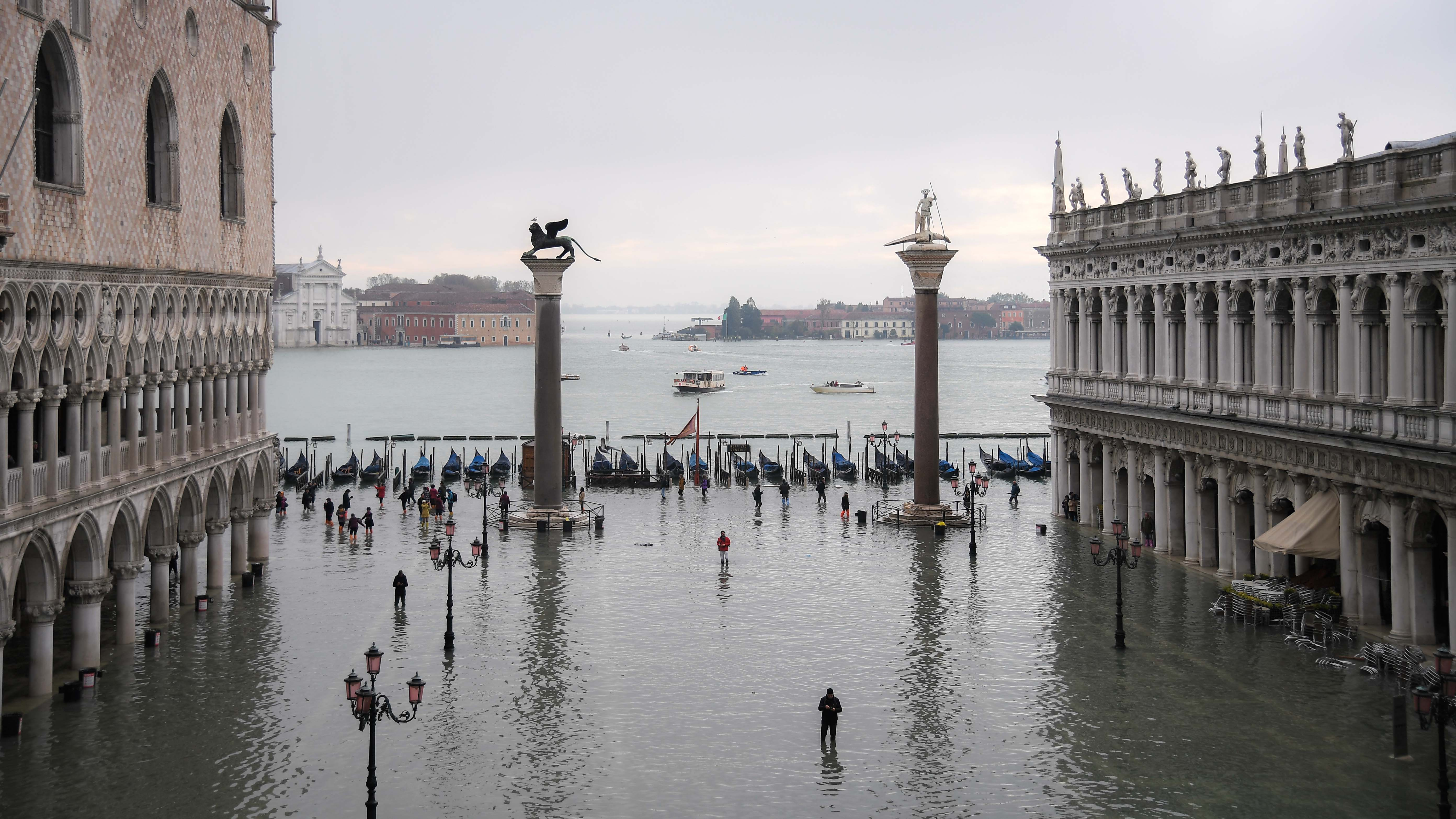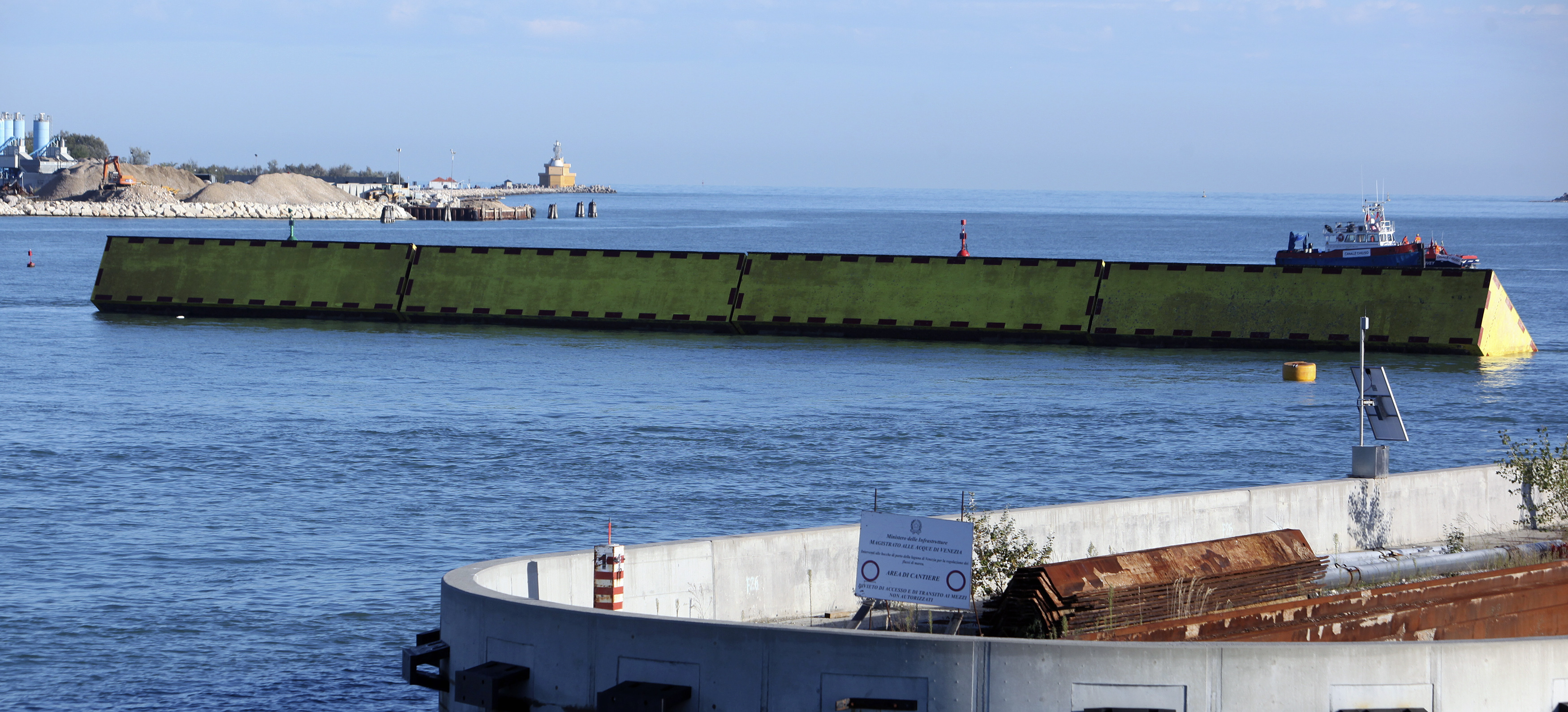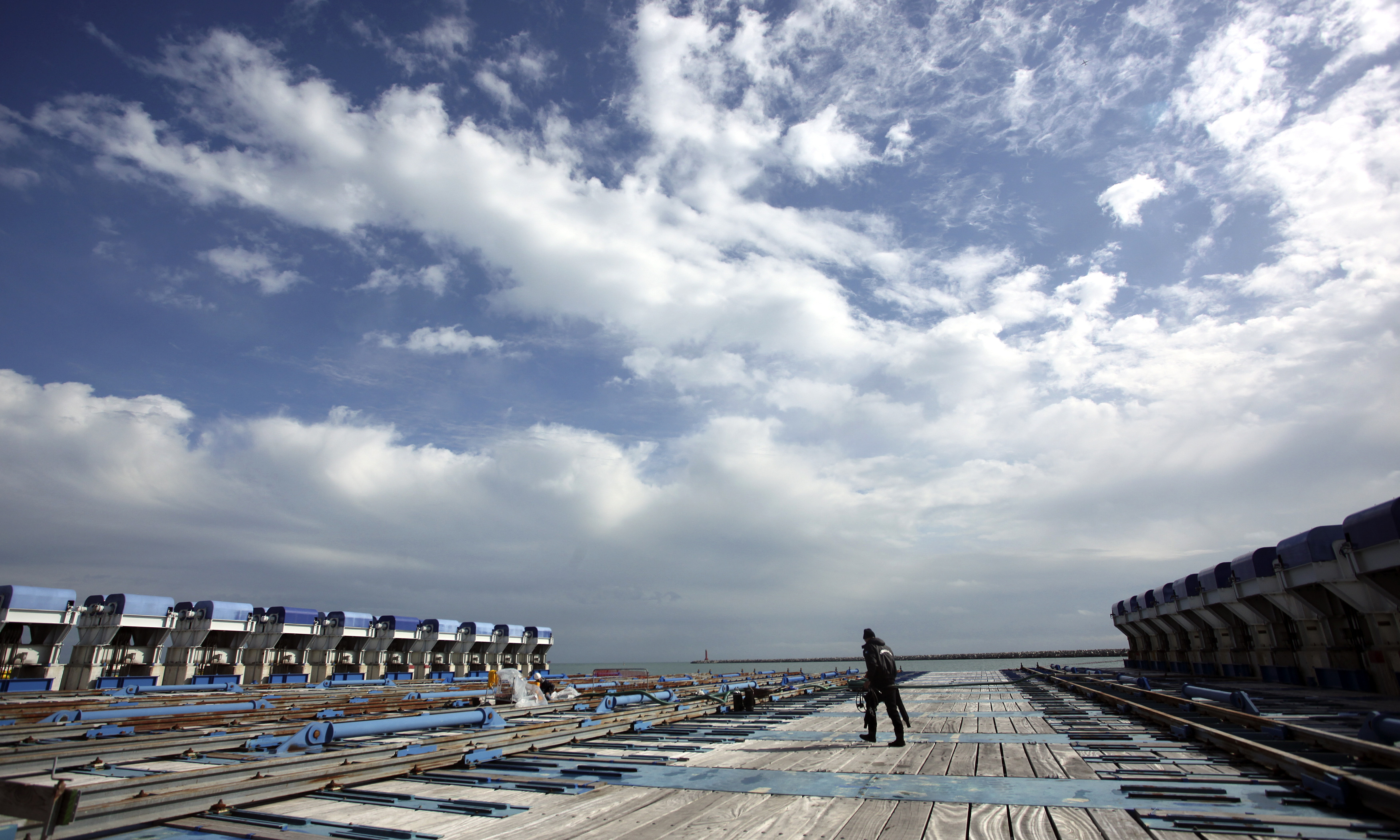03:21

After the worst flooding in Venice for 53 years, many have raised the question: what happened to MOSE? The flood barrier, which is designed to protect the Italian city from high tides, was approved in 2003 but is not yet operative.
A project already 16 years in the making
The problem of saving Venice from flooding has been a matter of Italian national interest since it was submerged by a record-high tide in 1966, and the first plans for MOSE were discussed in the 1980s.
The final conceptual design for the project was approved in 2003, with construction work starting the same year.
The name MOSE is an acronym that stands for Experimental Electromechanical Module, but the similarity to the name Moses and the biblical story of him parting the Red Sea is also pertinent – the system is supposed to temporarily separate the lagoon from the sea with a structure of four barriers made up of 78 mobile gates that rise to stop high tides.
It will become one of Europe's major storm surge barriers, together with the Thames Barrier in London, UK and the Maeslantkering and Oosterscheldekering barriers in the Netherlands, but the particular environmental conditions of the Venetian lagoon make it a very challenging project.

Mobile gates are supposed to prevent tides higher than 110 centimeters from flooding Venice. REUTERS/Manuel Silvestri
Mobile gates are supposed to prevent tides higher than 110 centimeters from flooding Venice. REUTERS/Manuel Silvestri
According to the engineers who planned it, the system should be able to protect the city from tides as high as three meters and is prepared to face a rise in the sea level to a maximum of 60 centimeters in the next 100 years.
The total cost of MOSE was put at $6.07 billion. With construction work 94 percent complete, the $285 million necessary to complete the project is currently being blocked for bureaucratic reasons. It is estimated that once operative MOSE will require $88.4 million per year for maintenance.
Like other big public projects in Italy, corruption and mismanagement of public funds have dogged MOSE and delayed its conclusion, which was initially planned for 2018.
Luca Zaia, president of the Veneto region, told reporters the situation is "a national scandal."
"I was in primary school or middle school when people were talking about MOSE," Zaia said. "We have 5 billion euros ($5.5 billion) under water and we don't really understand why MOSE is not operative, especially because for us the works are completed."
In 2014, Giovanni Mazzacurati, president at the time of the concessionary in charge of the project, was at the center of a scandal that revealed a system of bribery and fraud that has consumed up to $276 million from the budget intended for MOSE.

Four barriers have been built in three different inlets in the Venice lagoon. To oppose high waters, the barriers can all be closed at the same time or work independently. (Credit: Reteurs/Manuel Silvestri)
Four barriers have been built in three different inlets in the Venice lagoon. To oppose high waters, the barriers can all be closed at the same time or work independently. (Credit: Reteurs/Manuel Silvestri)
Will MOSE stop future high tides from submerging the city?
While Mazzacurati died in California last year without standing trial, the protagonists of the story have changed and a new management team is now in charge of seeing MOSE finally completed and operational.
In a recent media conference on the flooding, Italian Prime Minister Giuseppe Conte called for the completion of MOSE as quickly and as efficiently as possible "in the name of public interest."
According to the current planning, MOSE will become fully operative by December 2021, but the mobile gates should be able to stop floods by the end of 2020.
Many are already questioning whether MOSE would be sufficient to save the city from waters as high as the ones registered this November, which caused Venice millions of dollars worth of damages, with particular concern for the artistic heritage of the city.
If MOSE had been operative during the flooding and working as planned, it should have been able to stop the water from invading the lagoon. But the system has never been tested in similar conditions to those.
One problem with the system could be timing, because, according to estimates by experts, it will take at least five hours for the system to activate during high tides.
Another problem is the wind, which when blowing at 100 kilometers per hour makes the gates oscillate and lower – an effect observed during recent testing.
But the main issue seems to be related to the global climate crisis. When MOSE was first designed, the predicted rise in global temperatures and sea levels over the following 10 years was lower than those experts now expect.
It is possible that when MOSE finally becomes operative, new solutions will need to be found to save the city from flooding.